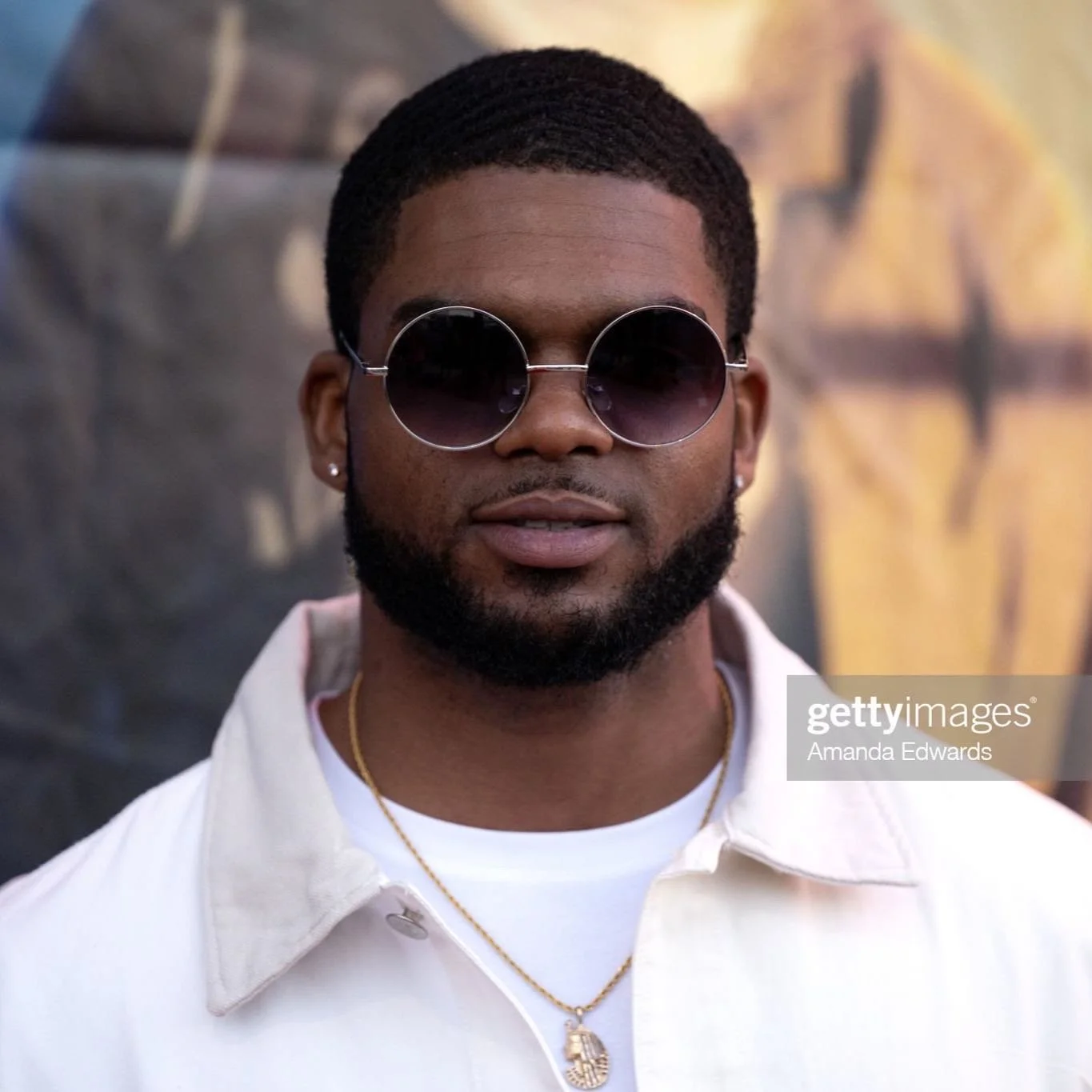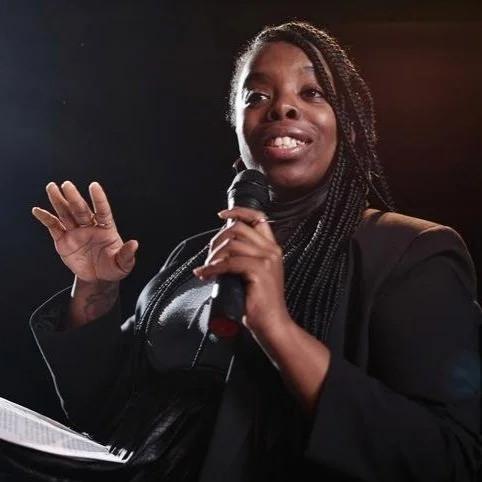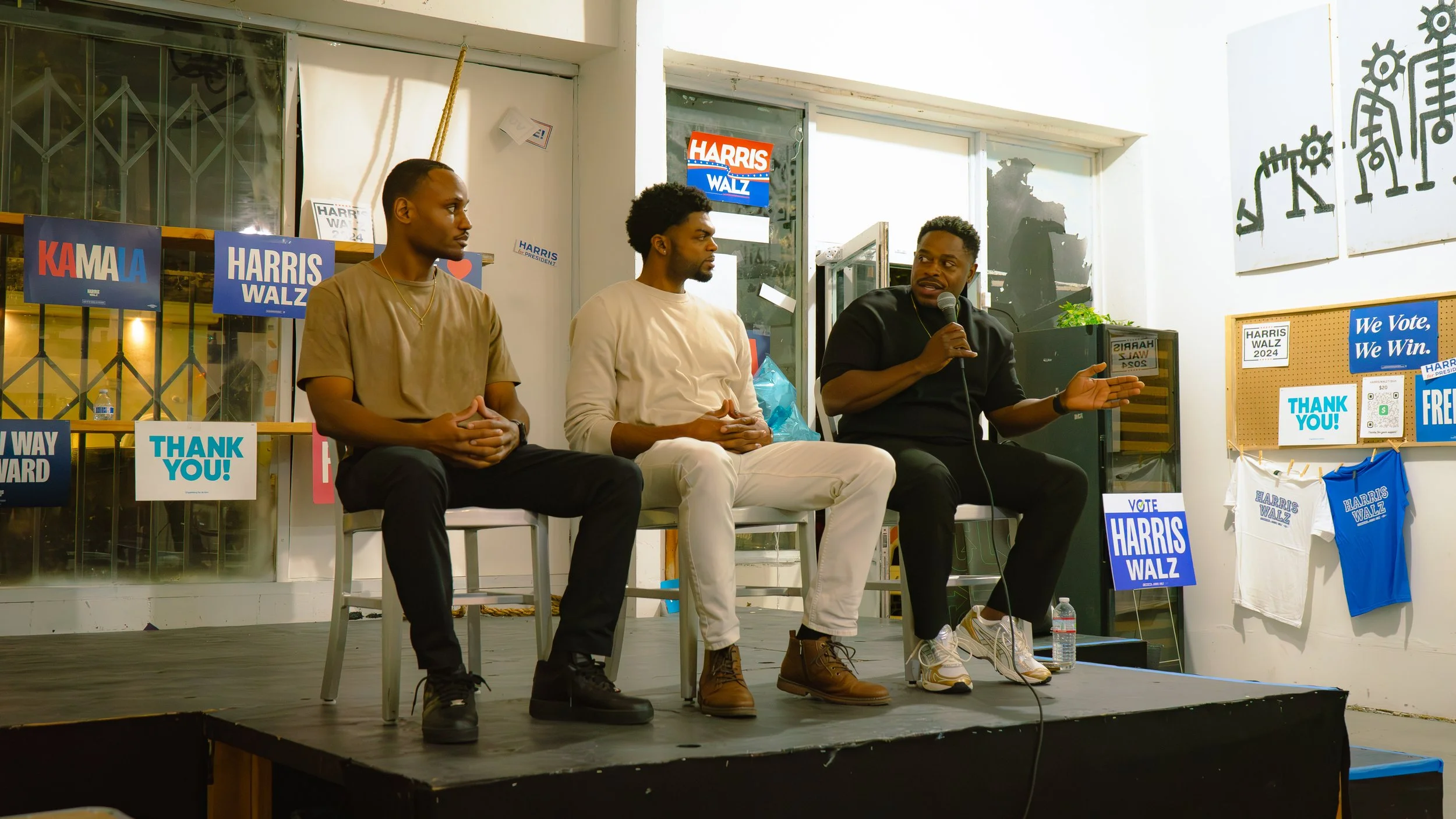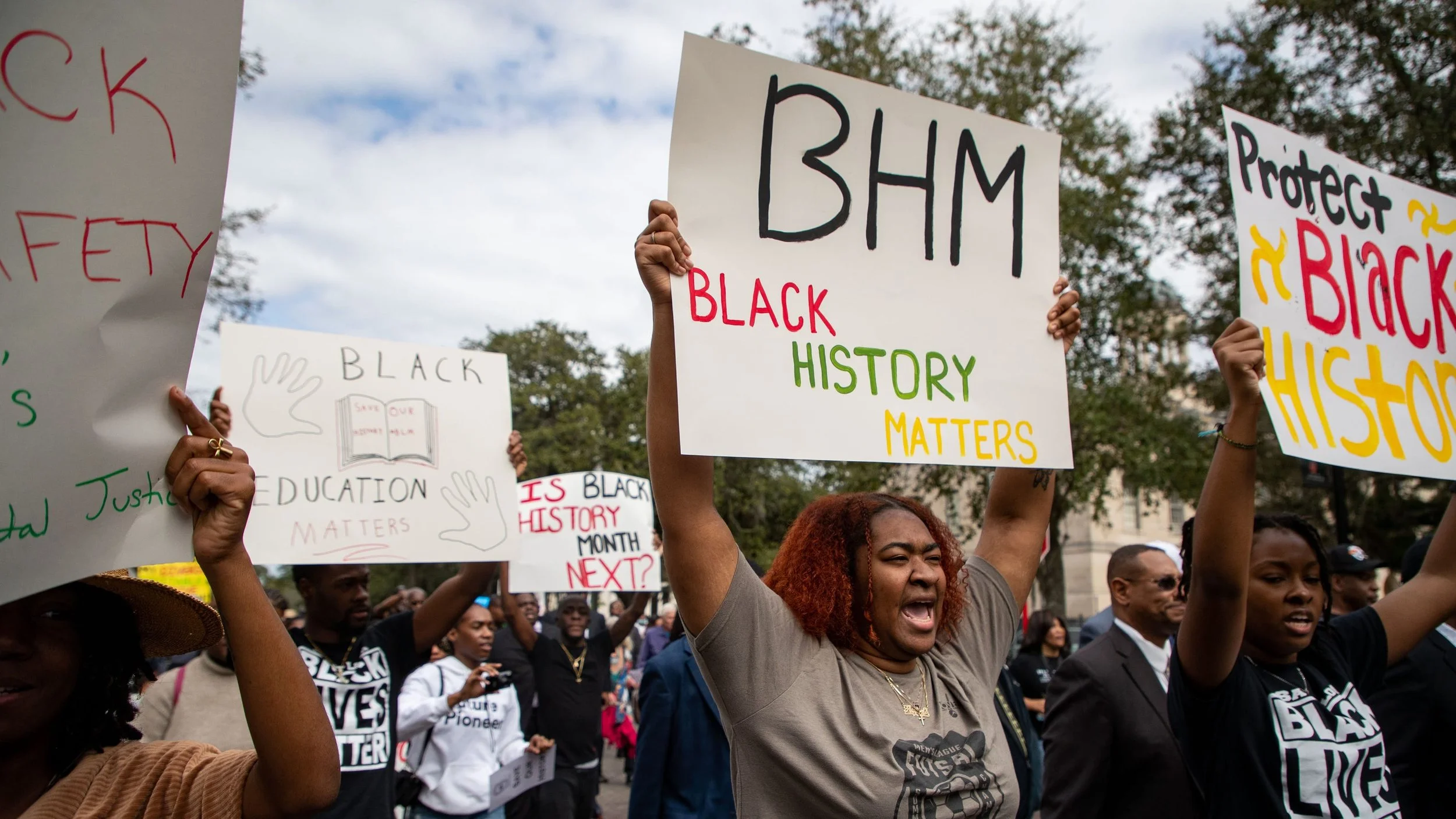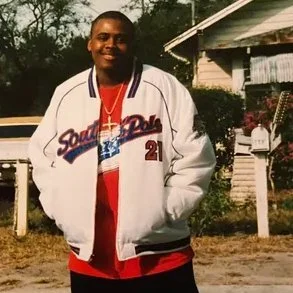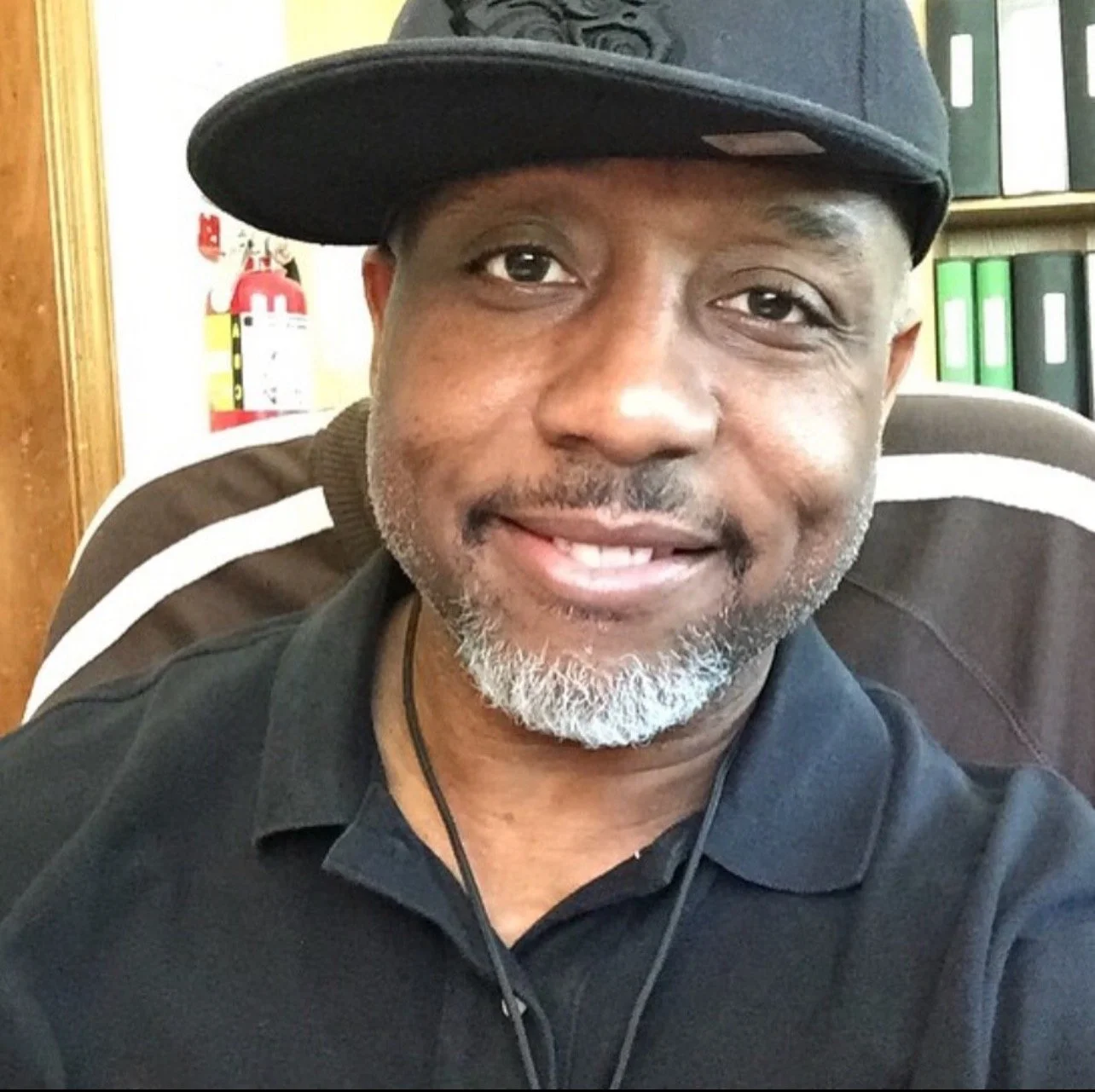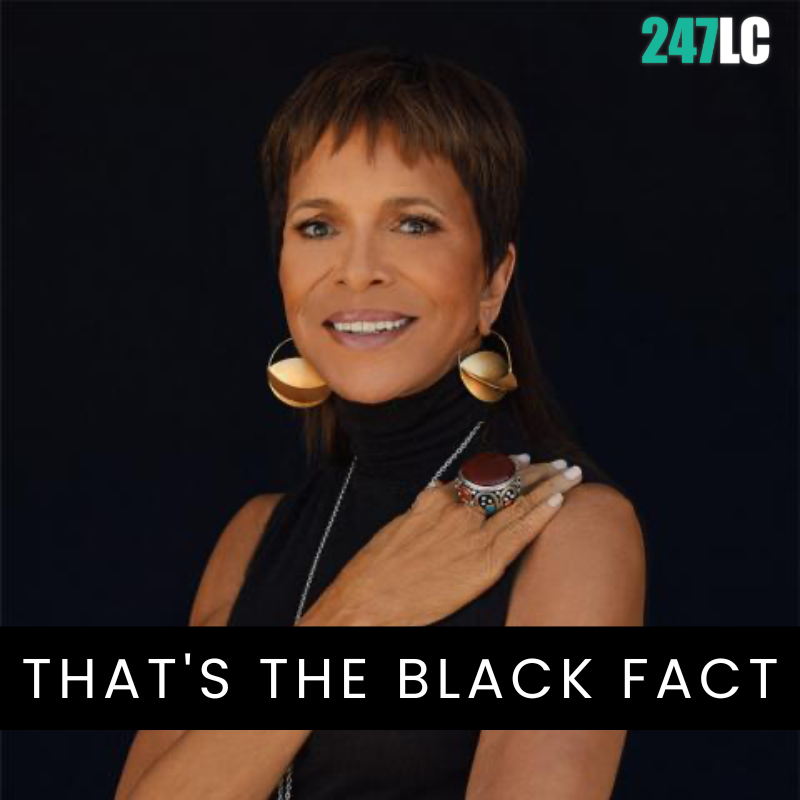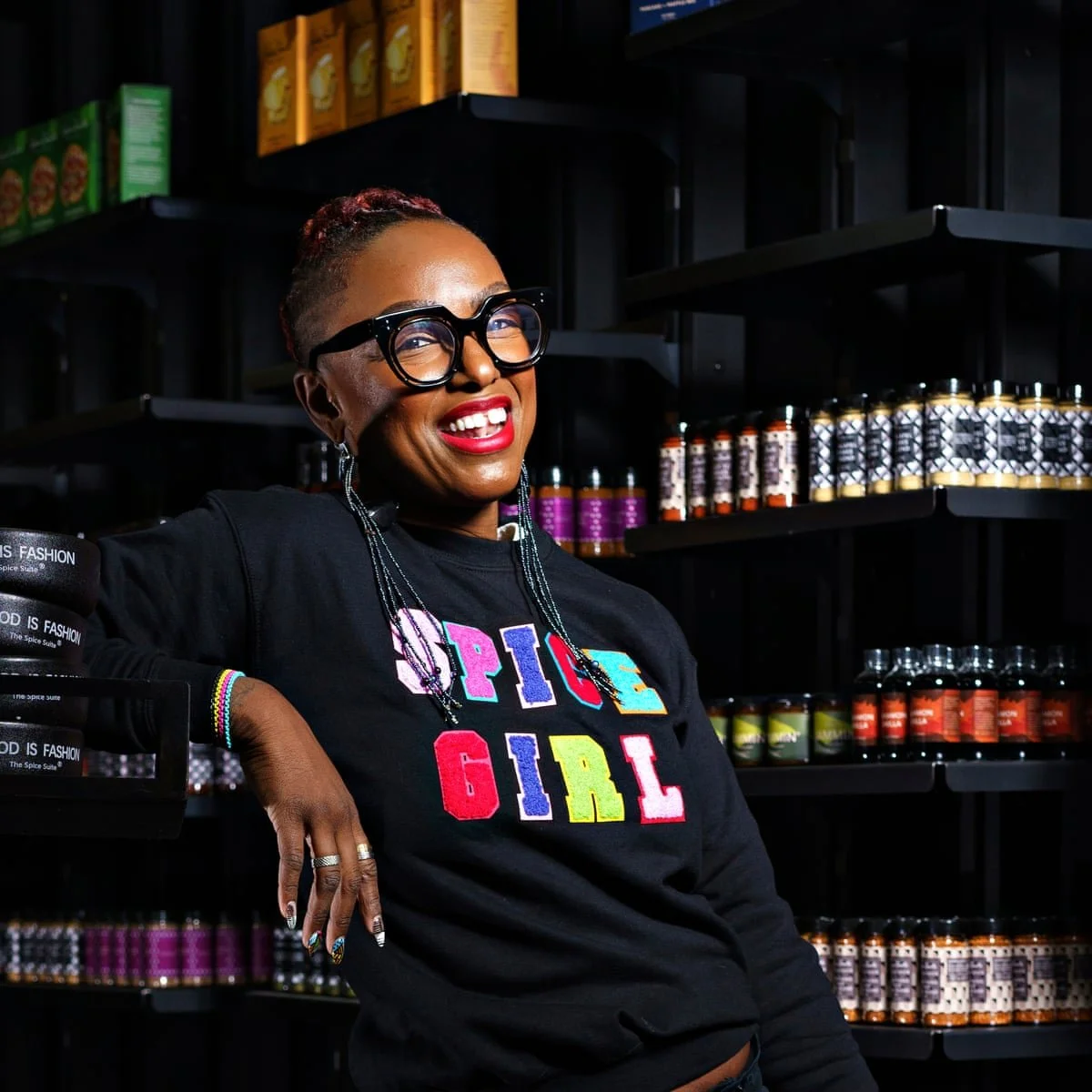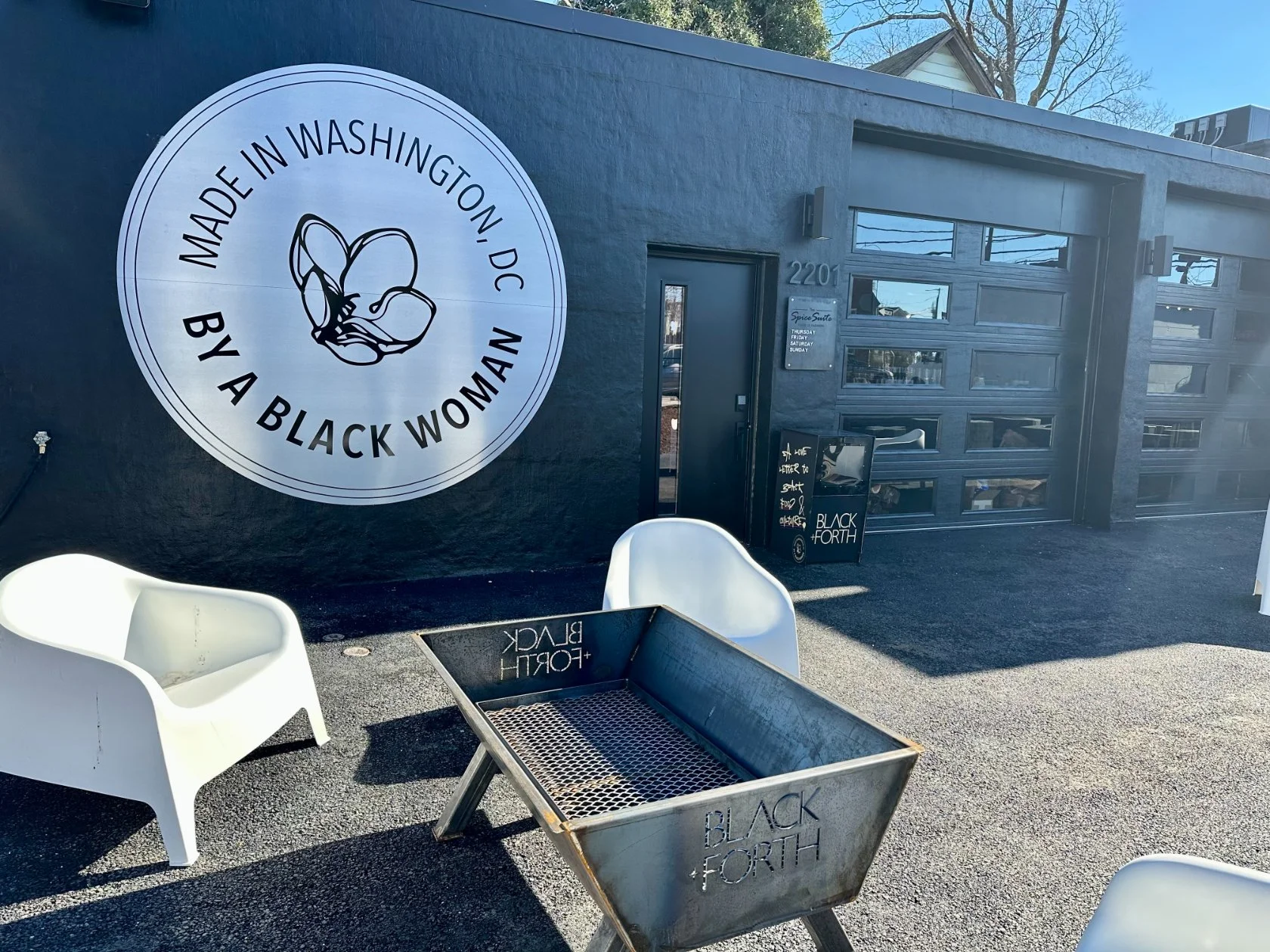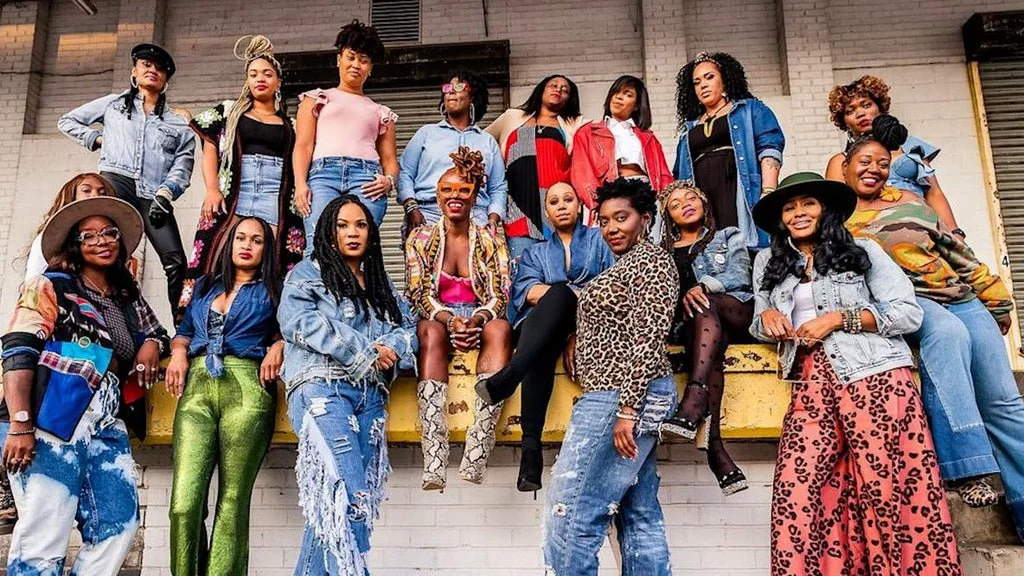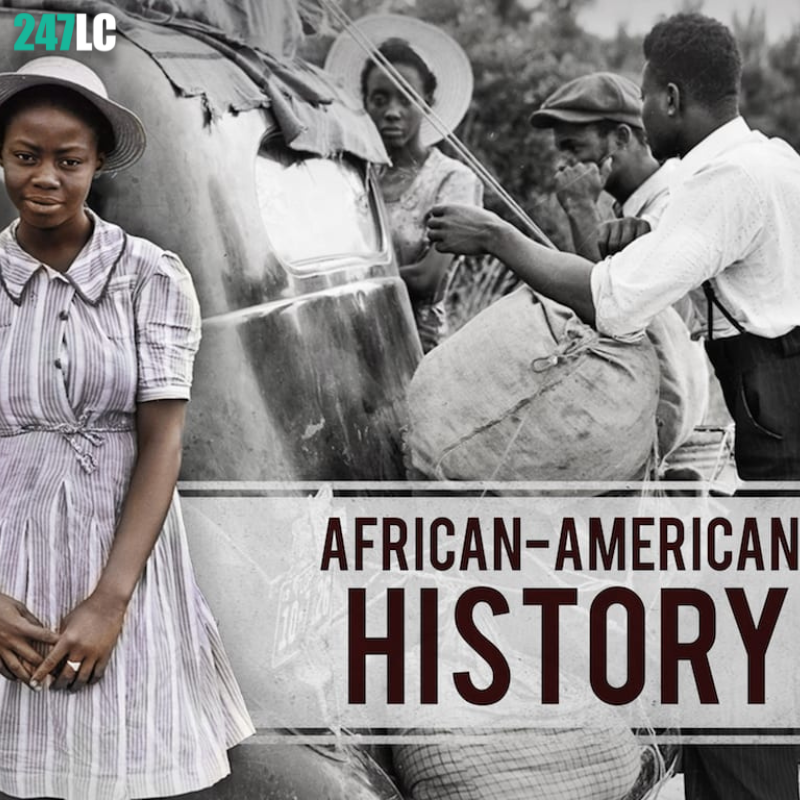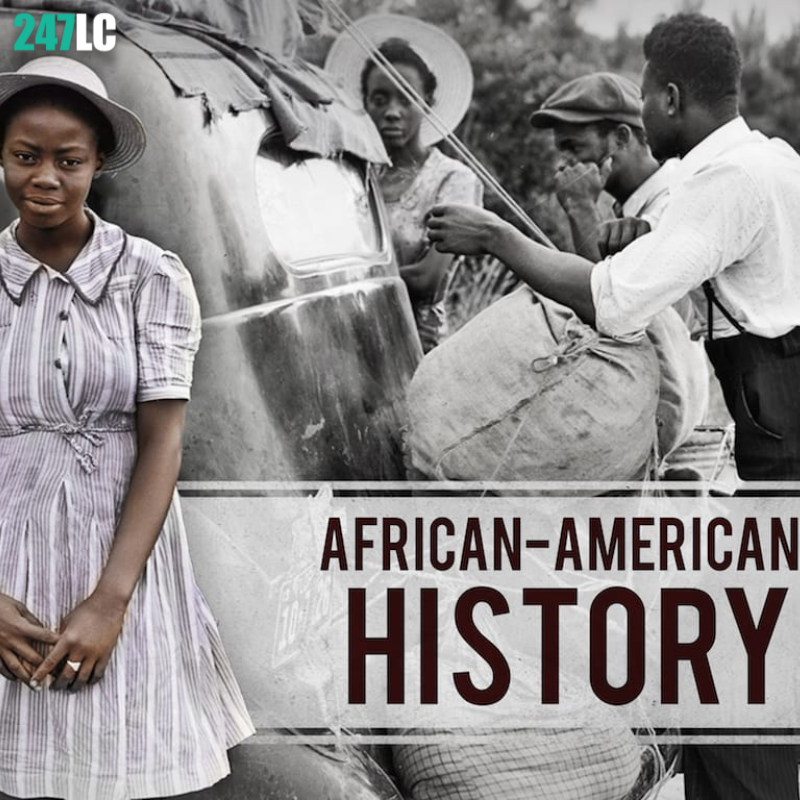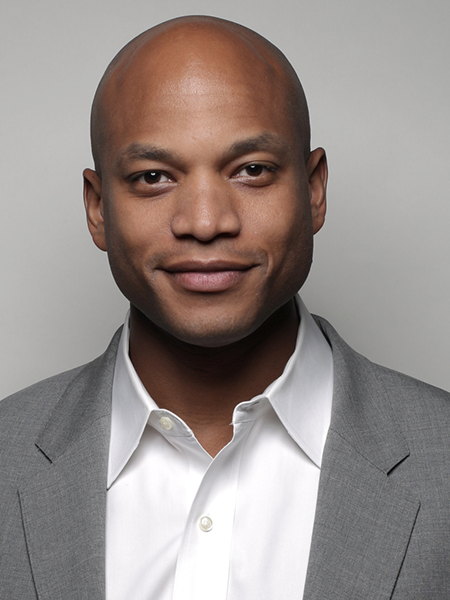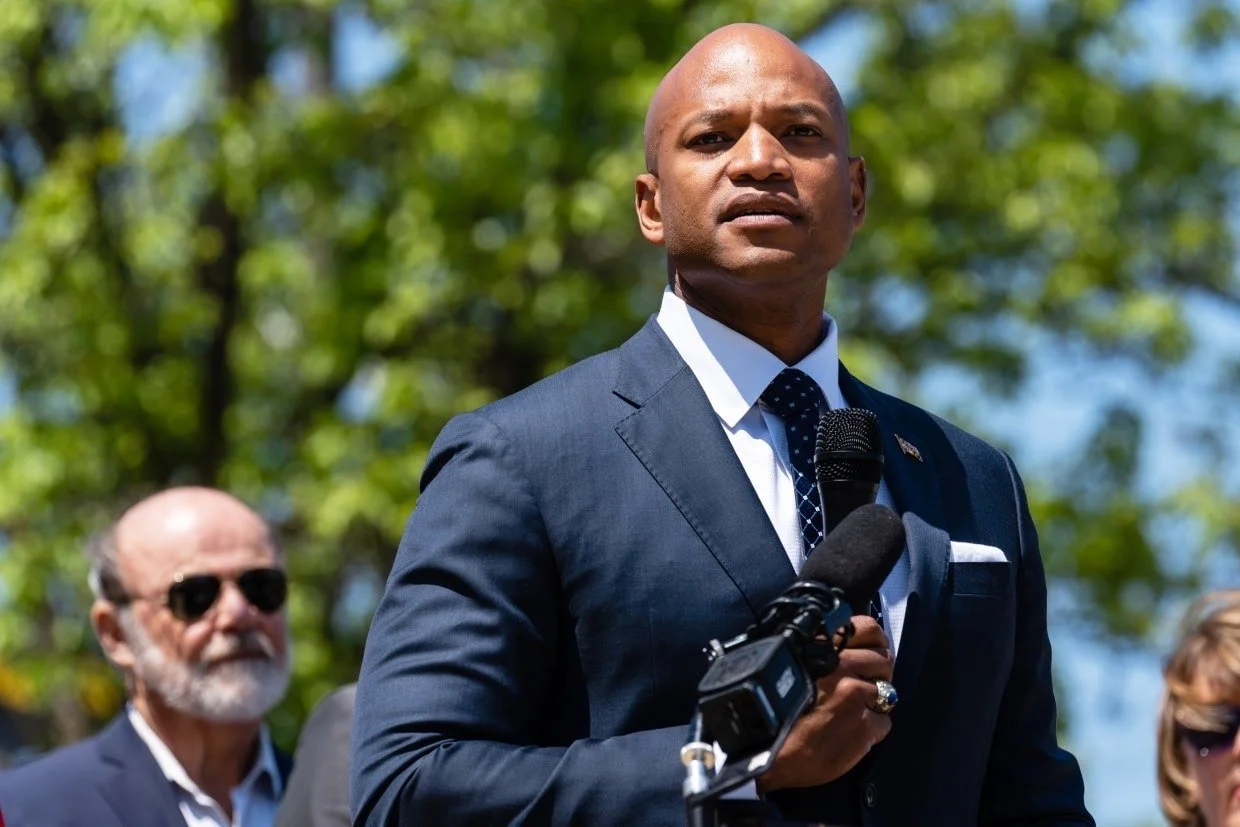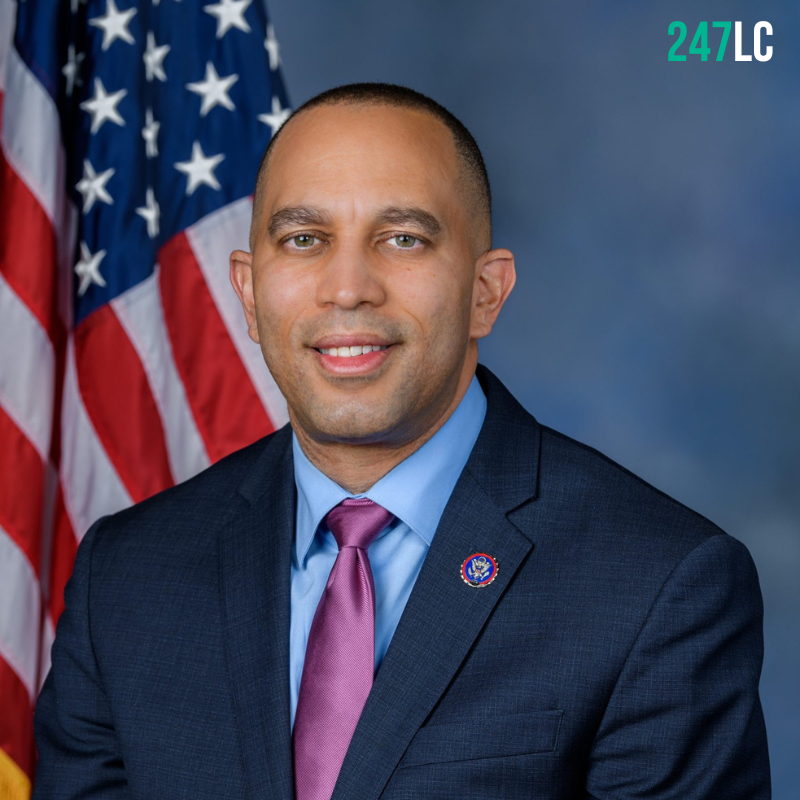High School Student Dennis Barnes Breaks Guinness Record With $9 Million in Scholarship Offers
Dennis Barnes, a senior at International High School of New Orleans, set a new Guinness Book World Record racking up over $9 million in scholarship offers! We discuss it here!
Dennis Barnes (Credit: WWLTV)
By: Omar Cook
With high school seniors nationwide gearing up to make their college choices, a student in New Orleans has amassed a record-breaking sum of scholarship funding.
Dennis Barnes, a senior at International High School of New Orleans, has shattered the previous Guinness Book of World Records total of $8.7 million in scholarship offers set by a Louisiana student in 2019. Barnes received scholarship offers from 125 colleges across the United States, amounting to a whopping $9 million, according to local CBS station WWL. His remarkable achievement could still increase further as he awaits more decisions. Barnes aims to hit $10 million in scholarship offers before the month ends.
Dennis Barnes (Credit: WWLTV)
“I submitted college applications in August with an eye on raising the bar high for college admissions. Decision letters were an overflow in my mailbox and hundreds of scholarship offers,” Barnes told WWL.
Barnes has a GPA of 4.98 and is currently in leadership positions in his high school's National Honor Society chapter. He is also fluent in Spanish. Additionally, he has been taking college courses at Southern University of New Orleans while simultaneously completing his high school degree for the past two years. Barnes is scheduled to graduate from high school on May 24, and he intends to reveal his college decision on May 2.
YOU MAY ALSO BE INTERESTED IN:
SHARE TO SOCIAL MEDIA
College Board Makes Changes to AP African American Studies Course Following Backlash
College Board responds to backlash and controversy over AP African American Studies course changes following dispute with Florida Governor Ron DeSantis. We discuss it here!
Hundreds of people took part in a protest organized by the National Action Network in reaction to the attempts made by Governor Ron DeSantis to limit inclusive education. The demonstrators marched from Bethel Missionary Baptist Church in Tallahassee, Florida to the Capitol building while chanting slogans and holding signs Wednesday, February 15, 2023. USA TODAY
By: Adonis Armstrong
The College Board has announced additional changes to the AP African American Studies course following backlash over the removal of certain topics, which had been criticized by Florida Governor Ron DeSantis.
The nonprofit organization is responsible for overseeing the Advanced Placement program and standardized tests such as the SAT and PSAT exams, stated that a development committee and experts in the AP program will determine the specific details of these changes over the coming months.
This comes after the College Board engaged in a public dispute with Florida Governor Ron DeSantis, a potential front-runner for the 2024 GOP presidential nomination, and the state's Department of Education. Earlier this year, Florida rejected a preliminary pilot version of the AP African American Studies class, citing a lack of educational value and a state law that prohibits the teaching of critical race theory. He also used his opposition to "wokeness" to gain national attention in the ongoing conversation about how to teach history and address racism in schools, leading to the passage of legislation in Florida that prohibits instruction that implies anyone is privileged or oppressed based on their race or skin color.
The College Board stated their main goal in developing the course was to provide access to a subject that is not commonly available to high school students, and to make this content accessible to as many students as possible. According to the board the AP African American Studies course is currently undergoing a pilot run in 60 high schools, and will be introduced to 800 schools and 16,000 students in the next academic year. The first administration of the AP African American Studies exam is expected to take place in the spring of 2025.
The College Board provides Advanced Placement (AP) courses covering various academic fields, such as mathematics, science, social studies, foreign languages, and fine arts. These courses are not mandatory and are taught at a collegiate level. Typically, students who attain high scores on the final exam are eligible to receive course credit at their university.
YOU MAY ALSO BE INTERESTED IN:
SHARE TO SOCIAL MEDIA
Colin Kaepernick Will Fund Independent Autopsy of Lashawn Thompson Who Died in Bug Infested Cell
Former NFL Quarterback Colin Kaepernick will fund an independent autopsy of Lashawn Thompson, a Fulton County Jail inmate who passed away last year while in custody and his bed was infested with bed bugs. We discuss it here!
Colin Kaepernick with the San Francisco 49ers
Photo: AP PHOTO/TED S. WARREN.
By: Omar Cook
According to civil rights lawyer Ben Crump, former NFL quarterback Colin Kaepernick will fund an independent autopsy of Lashawn Thompson, a Fulton County Jail inmate who passed away last year while in custody in Atlanta, Georgia.
Thompson's family alleges that he was consumed by bed bugs and lice, as evidenced by the bite marks that were discovered all over his body. Colin Kaepernick, a free agent in the NFL and activist, is now offering his support to Thompson's family.
These are the conditions of the Fulton County Jail, where Lashawn Thompson was found dead, covered in lice and feces. At the time of his death, over 90% of his unit was severly malnourished. EVERY person had lice or scabies.
— Clara T Green (@ClaraTGreen) April 13, 2023
He was 35 years old. pic.twitter.com/OnQYGgo4ZL
Although the initial autopsy report from the Fulton County medical examiner listed Lashawn Thompson's cause of death as "undetermined," it did acknowledge an "extremely severe" bug infestation that may have exacerbated other health problems. Yesterday, on April 20th, it was revealed that Colin Kaepernick will finance a second autopsy. The former San Francisco 49ers player reached out to civil rights lawyer Benjamin Crump, who is representing the victim's family, to ensure that accurate information about Thompson's death is obtained.
At the press conference, Attorney Ben Crump announced that Colin Kaepernick would help fund an independent autopsy of Lashawn Thompson. The medical examiner’s report did not determine a cause of death but did note the severe bed bug infestation. pic.twitter.com/BWDg9DJFjl
— Matthew Pearson (@justmattphotoj) April 20, 2023
Michael Harper, who is legally representing Thompson's family, stated, "The cell he was in was not fit for a diseased animal. This is inexcusable and it’s deplorable." After expressing his condolences to Thompson's family, Fulton County Sheriff Patrick Labat issued a statement acknowledging that the type of infestations that led to Thompson's death could be a recurring issue in a facility where many detainees sleep on the floor due to overcrowding. Georgia Senator Jon Ossoff has taken measures by initiating an inquiry into the jail where Thompson passed away, as well as two other county jails.
Colin Kaepernick has previously supported families of victims in similar circumstances. As per Sports Illustrated, the former quarterback disclosed in 2022 that he would fund several independent investigations via his Know Your Rights Camp Autopsy Initiative. Kaepernick continues to be a voice for change and is using his platform to fight for injustices around America.
YOU MAY ALSO BE INTERESTED IN:
SHARE TO SOCIAL MEDIA
America Rallies Behind Ralph Yarl With GoFundMe Surpassing $3 Million After Traumatic Shooting
After being shot twice for accidentally knocking on the wrong door, 16 year old Ralph Yarl, is receiving an outpour of support with GoFundMe donations surpassing $3 Million. We discuss it here!
Ralph Yarl
Photo: GoFundMe
By: Omar Cook
Last Thursday, a 16 year old Black teenager, Ralph Yarl, was shot twice by an 84 year-old white male, Andrew Lester, after knocking on his door by accident. The incident happened in Kansas City, Missouri, as Yarl was looking to pick up his younger siblings but went to the wrong address.
Ralph was instructed by his mother to go and get his two brothers but simply went to an address that was similar to the one his mother gave him. Felony charges have been filed by Kansas City authorities against Lester as he faces assault in the first degree and armed criminal action. This was a decision that was first revealed by Prosecutor Zack Thompson.
“After a thorough review of the case file, the appropriate laws, and information gained during the investigation phase of the case, I filed two felony counts,” Thompson said. “We understand how frustrating this has been, but I can assure the criminal justice system is working and will continue to work.”
On Monday, April 17, a GoFundMe was launched by Ralph Yarl’s aunt, Faith Spoonmore, to support her nephew’s recovery. The GoFundMe has already received an outpouring of support bringing in over $3 million so far.
Spoonmore wrote, “Even though he is doing well physically, he has a long road ahead mentally and emotionally. The trauma that he has to endure and survive is unimaginable … He is our miracle. We have heard these types of stories many times, and unfortunately, most black boys are not alive to get another chance.”
Relatives describes Ralph as a quiet and gentle person who truly loves the art of music. Ralph is an accomplished musician as he recently earned Missouri All-State Band recognition. He also plays multiple instruments in the metropolitan youth orchestra.
Lester eventually turned himself into police on Tuesday, April 18. Lester posted a $200,000 bond and released from the Clay County Detention Center hours later. CNN reveleaed a probable cause document where Lester claimed he was “scared to death” and also “believed someone was attempting to break into the house” which says his defense will most likely try to prove that he was in danger.
On Tuesday as well, Ralph’s classmates at Stalley High School organized a school wide walkout to pay their respects. This was a strong gesture as Ralph will need all the support and love he can get.
Students at Staley High School in Kansas City, Missouri, walked out of class on Tuesday to march for Ralph Yarl, their Black classmate who was shot twice on Thursday by an 84-year-old white man after going to the wrong address to pick up his brothers.https://t.co/JSMRtJbEVF pic.twitter.com/3yYAswArV6
— The New York Times (@nytimes) April 18, 2023
This has been an unfortunate and saddening event as no teenager should have to face a traumatic experience just because they went to the wrong house. More updates coming soon.
YOU MAY ALSO BE INTERESTED IN:
SHARE TO SOCIAL MEDIA
Malcolm X's Daughter Sues CIA, NYPD, FBI Over Concealing Evidence
Qubilah Shabazz, one of Malcolm X's daughters has filed a lawsuit against the CIA, NYPD, and FBI for allegedly withholding information related to her father's assassination. We discuss it here!
By: Adonis Armstrong
In 1965, civil rights leader Malcolm X was assassinated while giving a speech in New York City. The murder of the prominent activist and orator shocked the world and sparked a new era of activism and protest. However, despite decades of investigation the full story of Malcolm X's assassination has never been fully uncovered. Now one of his daughters is taking legal action to try and uncover the full truth. Every year we celebrate Black History in the month of February. It became a Federal institution in 1976 when President Gerald Ford made a declaration and became law signed by Congress in 1986.
Qubilah Shabazz, one of Malcolm X's six daughter is suing the CIA, the FBI, and NYPD for allegedly withholding information related to her father's assassination. The lawsuit which was filed in February 2021, claims that the agencies have failed to release records related to the assassination, despite repeated requests from Shabazz and other members of the family.
The lawsuit alleges that the agencies are in violation of the Freedom of Information Act (FOIA), which requires government agencies to release records upon request. According to the complaint the agencies have failed to release documents that could shed light on the circumstances surrounding Malcolm X's death, and including potential links to the government or law enforcement agencies.
Shabazz's lawsuit comes at a time of renewed interest in Malcolm X's life and legacy. A new documentary, Who Killed Malcolm X?, which aired on Netflix in 2020 has sparked fresh debate and investigation into the events surrounding his assassination. The documentary raised new questions about the role of the NYPD and the FBI in the killing suggesting that the agencies may have been more involved than previously thought.
Malcolm X was a controversial figure during his lifetime known for his fiery speeches and his advocacy for Black rights and self-determination. He was a leader in the Nation of Islam, a Black nationalist group, before splitting from the organization and founding his own group, the Organization of Afro-American Unity. He was assassinated on February 21, 1965, while giving a speech at the Audubon Ballroom in Manhattan.
The circumstances of Malcolm X's death have long been the subject of speculation and controversy. Three members of the Nation of Islam were convicted of his murder, but questions have persisted about whether they acted alone or were part of a larger conspiracy. The new lawsuit filed by Shabazz is just the latest attempt to uncover the truth about what happened that day.
The lawsuit seeks to force the CIA, the FBI, and the NYPD to release any records related to Malcolm X's assassination that have not already been made public. It also seeks to hold the agencies accountable for their alleged failure to comply with FOIA requests. The hope is that by forcing the agencies to release more information, the truth about what happened to Malcolm X can finally be uncovered.
The lawsuit is just one part of a larger effort to uncover the truth about Malcolm X's assassination. The renewed interest in his life and legacy sparked by the documentary and other events has led to renewed investigation and inquiry. For Shabazz and other members of the family, the hope is that the lawsuit will be a step towards closure and justice for their father.
YOU MAY ALSO BE INTERESTED IN:
SHARE TO SOCIAL MEDIA
That's the Black Fact: The History and Significance of Black History Month
Learn about the history and significance of Black History Month, including the role of Dr. Carter G. Woodson and the evolution of the celebration from a week to a month.
“Welcome to ‘That’s the Black Fact’. In this space you’ll find profiles on the culture and the people who built it!”
By: Ervin Green
Learn about the history and significance of Black History Month, including the role of Dr. Carter G. Woodson and the evolution of the celebration from a week to a month.
Black History Month (1976)
Every year we celebrate Black History in the month of February. It became a Federal institution in 1976 when President Gerald Ford made a declaration and became law signed by Congress in 1986.
But it’s true beginning was due to Harvard-educated historian and author, Dr. Carter G. Woodson, who is credited with creating Black History Month. He was inspired after attending a 50th anniversary celebration of the 13th Amendment where various exhibits portrayed events in African American culture. With a mission to amplify Black people’s contributions and achievements, Woodson went on to create what is now known as the Association for the Study of Afro-American Life and History (ASALH).
In 1926, Woodson and ASALH declared the second week of February—which aligned with Abraham Lincoln’s and Frederick Douglass’ birthdays—to be “Negro History Week.”
During the next 50 years, communities, schools and organizations started participating in the week-long recognition of African American trials and successes. As public interest grew, particularly during the 1960s civil rights movement, the celebration expanded from a week to a month.
Take time to research more about the celebration and the people that made this an official memorial.
YOU MAY ALSO BE INTERESTED IN:
SHARE TO SOCIAL MEDIA
That's the Black Fact: The Devil's Punchbowl a Tragedy in History
Revisiting a tragedy in history The Devil’s Punchbowl, the post American Civil War Black concentration camp!
The Devil’s Punchbowl
“Welcome to ‘That’s the Black Fact’. In this space you’ll find profiles on the culture and the people who built it!”
By: Ervin Green
Introducing The Devil’s Punchbowl, the post American Civil War Black concentration camp!
The Devils Punchbowl (1865)
The Devil's Punchbowl is a location that has been forgotten in history occurring in 1865. This post American Civil War Black history note occurred in Natchez (Adams County), Mississippi.
As the Black enslaved made their way to freedom, the population in the town of Natchez quickly went from 10,000 to nearly 100,000. To deal with the extreme population growth due to the relocation of recent freedmen, a concentration camp was established by Union soldiers to dispose of the recently freed slaves. Don Estes, former director of the Natchez City Cemetery, said. "So, they decided to build an encampment for 'em at Devil's Punchbowl, which they walled off and wouldn't let 'em out."
The camp was called the Devil's Punchbowl because of how the area was shaped. The camp was at the bottom hollow pit with trees on the bluffs above. The women and children were locked behind the concrete walls of camp and left to die from starvation. Over 20,000 freed slaves were said to be killed inside this American concentration camp in one year.
It’s a story so horrific that it’s nearly been erased from American history.
This is a story that no matter how offensive of it may be for some, it should be remembered as a tribute to those that succumbed to the torturous ideology that prevailed at that time.
YOU MAY ALSO BE INTERESTED IN:
SHARE TO SOCIAL MEDIA
That's the Black Fact: Introducing Hiram Rhodes Revels
Introducing Hiram Rhodes Revels, the first African American to serve on the United States Senate!
Hiram Rhodes Revels
“Welcome to ‘That’s the Black Fact’. In this space you’ll find profiles on the culture and the people who built it!”
By: Ervin Green
Introducing Hiram Rhodes Revels, the first African American to serve on the United States Senate!
Hiram Rhodes Revels (1827 - 1901)
Hiram Rhodes Revels was born in Fayetteville, North Carolina, on September 27, 1827. Despite being born in the South in a time of widespread slavery, Revels was a member of a free family. He and his brother both apprenticed as barbers. Revels' in 1845 moved from North Carolina to study in Ohio and Indiana.
Revels participated in the Civil War, organizing two Black regiments for the Union Army. He also fought for the Union at the Battle of Vicksburg. He quickly grew to be a respected member of the community, known for his keen intelligence and oratorical skills. Having no previous government experience, Revels garnered enough community support to win election to the position of alderman in 1868, during the first phase of Reconstruction.
In 1870, the state congress selected Revels to fill a vacant seat in the United States Senate. Debate surrounding his eligibility hinged on the
1857 Dred Scott decision, which precluded African American citizenship.
The decision was effectively reversed by the ratification of the 14th Amendment after the Civil War. Democrats argued that Revels did not meet the nine-year citizenship requirement to hold congressional office given his ineligibility for citizenship through the war years. Ultimately, Revels and his Republican allies prevailed by citing Revels's mixed-race background, and Revels became the first African American to serve in the United States Senate. His appointment was particularly symbolic in that the seat he occupied had previously belonged to Jefferson Davis, the president of the Confederacy.
He only held the seat for one year. He accepted the Presidency of HBCU Alcorn A&M College back in Mississippi. In addition to his administrative and teaching roles, Revels remained involved in the Methodist church, preaching until the end of his life on January 16, 1901.
YOU MAY ALSO BE INTERESTED IN:
SHARE TO SOCIAL MEDIA
That's the Black Fact: Introducing James Edward Maceo West
Introducing James Edward Maceo West, the creator of the foil electret microphone!
James Edward Maceo West
“Welcome to ‘That’s the Black Fact’. In this space you’ll find profiles on the culture and the people who built it!”
By: Ervin Green
Introducing James Edward Maceo West, inventor and acoustician!
James Edward Maceo West 1931 -
Dr. West was born in Prince Edwards County, Virginia on February 10, 1931. West was deeply interested in radio and electronics from an early age, and he trained as a physicist. After graduating from Temple University in 1956 where he interned with Bell Labs during the summer breaks, they hired him and he began working in research on how humans hear led to his invention of the foil electret microphone in 1960.
If you've ever used a microphone, and most have, you can salute James West for it. Such devices were more sensitive, yet they used less power and were smaller than other microphones at the time, and they revolutionized the field of acoustics. Today, foil electret-style mics are used in everything from telephones to computers.
James West holds 47 patents in the United States and more than 200 foreign patents on microphones and techniques for making polymer electrets.
Dr. West was inducted into the Inventors Hall of Fame in 1999. He retired in 2001 after 40 years of service at Bell Laboratories, but he wasn’t finished! He took a Research Professor position with John’s Hopkins Whiting School of Engineering.
So as you’re doing interviews, being interviewed, or find yourself around a microphone for any other reason, you can thank Dr. West for his contribution.
YOU MAY ALSO BE INTERESTED IN:
SHARE TO SOCIAL MEDIA
That's the Black Fact: Introducing Sylvia Rhone
Introducing Sylvia Rhone, the Godmother of Black Music!
Sylvia Rhone
“Welcome to ‘That’s the Black Fact’. In this space you’ll find profiles on the culture and the people who built it!”
By: Ervin Green
Introducing Sylvia Rhone, music executive, record producer, and former chairman and CEO of Epic Records!
Sylvia Rhone 1952 -
Born in Philadelphia, PA and raised in Harlem, NY, Ms. Rhone can be called the Godmother of Black Music. But one of her biggest career highlights is the establishment of Sugar Hill in 1979 with her husband Joe Robinson and others.
Well before starting the label, Ms. Rhone had a career as an artist herself. She began her music career as a secretary for Buddha Records in 1974. She was promoted several times in the six years she was with the label. In 1980 she got a break in management as she was appointed the Regional Promotions Manager for Special Markets, and she was eventually promoted to director of National black music marketing for Atlantic Records.
Sylvia has produced records for artists like Ike & Tina Turner, and many others. She’s also known for the song “Pillow Talk” which incidentally was written for Al Green, who turned it down at the time due his religious beliefs, citing that the song was too risque.
Since 2014, she has been Chairwoman and CEO of Epic Records where she has nurtured rap artists like 21 Savage, Bobby Shmurda, and Future. She’s been a trailblazer her entire career.
Ms. Rhone’s resume is far too established for a three paragraph article, so we encourage you to take a look at the vast and lengthy contributions she’s added to the music industry with her voice and leadership!
YOU MAY ALSO BE INTERESTED IN:
SHARE TO SOCIAL MEDIA
Angel Gregorio Makes History With The First All Black Shopping Center In D.C.
Discover the motivating story of Angel Gregorio and her journey to creating the first all-black shopping center in D.C. We discuss it here!
Angel Gregorio | Owner of Black and Forth
By: Adonis Armstrong
In 2015, Angel Gregorio took a leap of faith and quit from being a principal to a business owner. She opened up a spice shop called the Spice Suite, but her aspirations were always bigger. Instead of just opening her own establishment, she remolded a 7,500 square foot lot in a D.C. neighborhood into a retail community for local Black-owned businesses. She named the space, Black and Forth, which is located at 2201 Channing St. NE.
Black and Forth
Angel now is the first Black woman to own a strip mall in D.C. and has partnered with other Black women entrepreneurs as well. The strip mall is home to a variety of businesses, including hair salons, clothing stores, and restaurants. Many of these businesses have been owned and operated by African American entrepreneurs for years and they will continue to be a staple in the community.
It is pivotal that the Black and Forth shopping center is protected and celebrated for future generations to understand the rich legacy of this extraordinary cultured place. I believe it will serve as a symbol of trust and motivation for other Black entrepreneurs who are looking to begin their own business in the future. With Angel Gregorio's leadership, the Black and Forth shopping center will be a vital part of D.C.'s community and a guide for financial empowerment for the black community.
YOU MAY ALSO BE INTERESTED IN:
SHARE TO SOCIAL MEDIA
That's the Black Fact: Introducing Henry Boyd
Introducing Henry Boyd, who invented the popular Boyd Bedstead in 1826!
Henry Boyd
“Welcome to ‘That’s the Black Fact’. In this space you’ll find profiles on the culture and the people who built it!”
By: Ervin Green
Introducing Henry Boyd, inventor, carpenter, and master mechanic!
Henry Boyd (1802-1886)
Henry Boyd was born enslaved on a plantation in Kentucky in 1802. He spent the first 18 years of his life enslaved. During his youth, he was apprenticed out to a cabinet maker. He turned out to be a very skilled apprentice that allowed him to accept additional work assignments.
Doing additional work, he was able to save enough money to gain his freedom. At 24, he moved to Cincinnati, Ohio. Ohio was a free state but its close border to Kentucky didn’t make it a welcoming state for African Americans.
To make ends meet, Boyd found work at the riverfront where most African American and Irish people found employment unloading cargo from steamboats. It wasn’t long before he became a janitor at a store.
Boyd’s fortune changed when a white carpenter showed up too drunk to work. Boyd used this opportunity to build a counter for the shopkeeper. So impressed by the craftsmanship, the storekeeper began to help him get contracted by other businesses where he found himself working side by side with white carpenters.
Henry Boyd accumulated enough money to purchase his own workshop for woodworking. His workshop soon grew to encompass four buildings located at the corner of Eighth and Broadway in Cincinnati. Here, Boyd would build and assemble bedframes of his own design, the Boyd Bedstead. This was an improvement over existing bedframes of the day.
The Boyd Bedstead utilized a right and left wood screw process, with swelled rails, making for a sturdier fit to endure more stress. He was unable to obtain a patent for it, due to the color of his skin.
In 1883 George Porter, a white cabinet maker obtained a patent for the technology Boyd used for making the beds. Boyd's bed design started to be duplicated by others. He stamped his name on each frame so that people would know that they were receiving the real Boyd Bedstead.
The H. Boyd Company, as his business was known, catered to hotels as well as individuals. In 1844, the company produced over 1,000 beds. By 1855, H. Boyd Company had expanded to include a showroom that also displayed his parlor furniture.
Sadly after a third fire destroyed his business, insurance companies refused to insure him. That led to the closing of his business for good in 1862. On March 1, 1886, Henry Boyd passed away at the age of 83. Despite his success and prominence achieved, Boyd was laid to rest in an unmarked grave in the Spring Grove Cemetary.
YOU MAY ALSO BE INTERESTED IN:
SHARE TO SOCIAL MEDIA
That's the Black Fact: Introducing Lucy Stanton Day Sessions
That's the Black Fact: Introducing Lucy Stanton Day Sessions, the first African American woman to graduate from college!
Lucy Staton Day Sessions
“Welcome to ‘That’s the Black Fact’. In this space you’ll find profiles on the culture and the people who built it!”
By: Ervin Green
Welcome to “That’s the Black Fact.” In this space you’ll find profiles on the culture and the people who built it!
Lucy Stanton Day Sessions (1831-1910)
Born free in Cleveland, Ohio, her father was a barber who passed before she was born, and her mother remarried later to a wealthy black businessman who was also an abolitionist and a participator in the Underground Railroad. Her stepfather created a school for African Americans because they couldn’t attend public schools.
As you can imagine, her household was all about the academics and she loved it. In 1846, she enrolled in Oberlin Collegiate Institute (now Oberlin College) where she continued to excel academically and in 1849, she was elected president of the school’s Ladies Literary Society. Sessions is believed to be the first African American woman to graduate from college in 1850. Her commencement speech was said to be a moving appeal for anti slavery.
In 1866 she was sponsored by the Cleveland Freedman's Association to teach in Georgia and later Mississippi, where she met and married her second husband in 1878. The couple moved to Tennessee where Lucy Sessions continued her philanthropic work, including serving as president of the local Women's Christian Temperance Union. She and her husband later moved to Los Angeles, California. Lucy Stanton Day Sessions died in Los Angeles in 1910.
YOU MAY ALSO BE INTERESTED IN:
SHARE TO SOCIAL MEDIA
Florida Blocks Teaching of AP African American Studies Class
Florida is facing criticism for blocking the implementation of a high school (AP) Advanced Placement course on African American studies. We discuss it here!
By: Adonis Armstrong
Florida is facing criticism for blocking the implementation of a high school (AP) Advanced Placement course on African American studies. The course was created by a group of teachers and specialists, aimed to provide students with a comprehensive knowledge and understanding of the African American experience. However, the Florida Department of Education (FDOE) rejected the course, expressing that it did not meet the state's guidelines for curriculum.
Critics of the FDOE's decision argue that the rejection of the AP African American studies course is a form of censorship and an attempt to hush the voices and viewpoints of African Americans. They too point out that the course had been approved by the College Board, the organization that supervises AP courses, and had received positive feedback from teachers and students who had taken the course.
Advocates for the course have called on the FDOE to reexamine its decision and to implement the course in Florida's high schools. They argue that the course would give students an important viewpoint on American history and society, and would offer assistance to combat the systemic prejudice and segregation that African Americans proceed to face.
The discussion over the AP African American studies course highlights the progressing debate over the representation and inclusion of marginalized groups in the American education system. It too raises vital questions about the role of the state in deciding what is instructed in schools and who has the control to shape the narrative of American history.
In conclusion, the block of a high school AP African American studies course in Florida is a profoundly controversial issue, with critics arguing that it is a form of censorship and an attempt to quiet the voices and viewpoints of African Americans. The debate over the inclusion of marginalized groups in the American education system proceeds, and it is significant that we as a society work to guarantee that all students have access to a diverse and comprehensive curriculum that reflects the complexity and abundance of our country's history and culture.
YOU MAY ALSO BE INTERESTED IN:
SHARE TO SOCIAL MEDIA
Wes Moore Makes History as First Black Governor of Maryland
Wes Moore makes history as the first Black governor of Maryland! We discuss it here!
Wes Moore | Governor of Maryland
Eric Lee | The Washington Post via Getty Images
“It’s impossible not to think about our past and our path. We’re blocks away from the Annapolis docks, where so many enslaved people arrived in this country against their will”
By: Adonis Armstrong
Wes Moore makes history as the first Black governor of Maryland as he was sworn in on January 18, at the state’s capitol building in Annapolis, which is the nation’s oldest state Capitol building and steps away from a dock that was one of the largest slave ports in America. Moore who is an Army vet who served in Afghanistan, author, and former CEO of the Robin Hood Foundation.
“This might be his first day as an elected official, but Wes Moore has been a public servant his entire adult life”
Oprah Winfrey introduced the 44 year old Democrat. Moore was sworn in using two Bibles, one of which belonged to Frederick Douglass. In his inaugural speech, he mentioned that Maryland is one of the wealthiest states in the nation, but also described it as “asset-rich and strategy poor.”
“It is time for our policies to be as bold as our aspirations and to confront the fact that we have been offered false choices. We do not have to choose between a competitive economy and an equitable one.”
Maryland Governor Wes Moore
Chip Somodevilla via Getty Images
Wes, who has never been in a public office before Wednesday, won by a landslide in November. Moore won the Democratic primary in July before winning the general election by more than 30 percent against Republican Dan Cox.
Moore wasn’t the only one who made history in Maryland yesterday. Aruna Miller who will serve under Moore as his lieutenant governor, is first Black woman to hold the position. Earlier this month Anthony G. Brown became the first Black attorney general in Maryland.
YOU MAY ALSO BE INTERESTED IN:
SHARE TO SOCIAL MEDIA
Hakeem Jeffries Makes History as the First Black Lawmaker to Lead a Party In Congress
Meet Hakeem Jeffries, the first Black Lawmaker to lead a party In Congress. We discuss it here!
Hakeem Jeffries
“There’s nothing more unifying than being in the minority and having a clear-eyed objective and goal of getting back into the majority”
By: Adonis Armstrong
Meet the Brooklyn native and the first Black Lawmaker to lead a party in Congress, Hakeem Jeffries. He is 52 years old which also makes him the first leader of the House of Representatives to be born after the end of World War II. He graduated in 1992 from Binghamton University with a Bachelors Degree in Arts with honors and also received a Masters of Public Policy from Georgetown University in 1994 He then attended New York University School of Law, where he received a Juris Degree in 1997, while being a member of the New York University Law Review.
After being chosen to the House of Representatives in 2012, Jeffries’ had a quick rise to top as more seniors gave up holding out for Pelosi and leaving for new occupations. To get there, he hand to face a former Black Panther then serving as a city councilman in the primary which he won easily.
Jeffries sponsored bills centered on criminal justice reform, drug policy, affordable medication access. He announced he has three major operating principles, “empowering every member, prioritizing security, and reclaiming the majority.”
Mr Jeffries has a passion for Hip Hop as he stated in a interview in 2021. “A substantial part of my upbringing related to my coming of age in the midst of the golden era of hip-hop music,” Jeffries stated at his yearly Hip Hop on the Hill event. Which is a different spin on Mississippi Rep. Bennie Thompson’s yearly catfish from the Delta.
The United States Representative is definitely down with the culture as he quotes some of Hip Hop's legends in his speeches at the House. This is just another stepping stone for what is more to come from people of color in positions of power.
YOU MAY ALSO BE INTERESTED IN:
SHARE TO SOCIAL MEDIA
Meet Jaylen Smith: The Youngest Black Mayor in U.S. History
Meet Jaylen Smith, a recent high school graduate who is set to become the youngest Black mayor elected in U.S. history! We discuss it here!
Jaylen Smith, Elected Mayor of Earle, Arkansas
By: Adonis Armstrong
Meet Jaylen Smith, the youngest Black mayor elect in U.S. history. This will too make him one of the most youthful mayors of any race within the U.S. Smith who is 18, and a fresh high school graduate, defeated his opponent, Nemi Matthews Sr., in a runoff race to rise as the mayor of Earle, Arkansas. Smith accumulated 235 votes, compared to Matthews’ 185, according to race results.
“Citizens of Earle, Arkansas, it’s official!! I am your newly elected Mayor of Earle, Arkansas… It’s Time to Build a Better Chapter of Earle, Arkansas. I would like to thank all my supporters for stepping up getting people to the polls. I am truly grateful for you all.” - Jaylen Smith
To get ready for the election, Smith counseled with a few former leaders in Arkansas to gain knowledge and a better understanding of the task at hand. He will be sworn in during this week of January, and he said his extreme objective is “to show the people of Earle results.
“I didn’t run to make a name for myself. I ran because i wanted to help my community and move my community in the direction that it needed to be moved in.” Smith told CNN.
Smith’s mayoral priorities include: making strides open security and transportation, crisis readiness, beautifying the city, and tending to the nourishment leave in Earle.
This is a major accomplishment by Smith, who could start a new trend of younger voices in leadership roles. I hope more continue to follow in his footsteps to run in more governor and mayor roles.
YOU MAY ALSO BE INTERESTED IN:
SHARE TO SOCIAL MEDIA
Miiriya, The App That Makes Shopping From Black Owned Businesses Easy
Black-owned businesses have exploded in popularity over the years, especially during the COVID-19 pandemic. Miiriya is an app that is making it easier to shop from Black owned businesses directly on one app! We discuss it here!
By: Kwana Adams
Black-owned businesses have exploded in popularity over the years, especially during the COVID-19 pandemic. There are now so many black-owned businesses that some popular e-commerce sites are even attempting to highlight or uplift black-owned businesses that they find. A lot of sites, however, take fees out of the profits that businesses make. It is amazing to see black people starting businesses and becoming successful, but it can get sometimes overwhelming to keep track of all of them. How can we possibly find what we’re looking for? If only there was a site that was not only for black-owned businesses but a site that is completely free to register for and 100% of proceeds go to the business…
“I wish there was a site like Etsy, but for black businesses.” “Is there an app like Amazon but only for black businesses?” If you’ve tweeted this, then you’re probably aware of the hilarity of the owner, Lamine Loco’s tweets to promote the app and you’ve probably gotten a response like these:
Don’t even think you’re going to tweet words like: Amazon, Etsy, Black Owned Business, and Miiriya’s not going to find out.
They gon’ find you..
Stop playing with this man. We’re all aware by now of the hard work, money, and time he has put into making Miiriya a place where we can thrive. This is a one man show, or one single N*gga running this whole show on his own and putting his whole foot into it. As a collective, we needed something like this where we can support and be supported. Amazon, Etsy, and other platforms can highlight black owned businesses and have separate tabs all they want, but they’re not here for us the way Miiriya is. Many of black owned businesses have praised the site for helping boost their sales. If you follow the Twitter account, you’re already aware of the daily tweets promoting products from the businesses on the site, and if you go to the website or the app, you’ll notice the many featured products and services that are constantly promoted.
Say the word three times and Miiriya will appear in your comments. What does the word actually mean though, and where does it come from? The word comes from Mr. Loco’s native language of Bambara/Dioula and it means “thoughts” and “ideas.” According to Mr. Loco, it can also be used with other words to mean “philosophers” and “thinkers.” It’s such a fitting name as the sole purpose of the app is to be a marketplace for all black owned businesses including but not limited to, cosmetics, fashion, books, decor, and more. Miiriya also now has booking services for black business owners to sell their services like hairstylists, classes, and even tutoring and language learning, and it continues to grow every day.
According to Glamour, Lamine Loco also plans to use the app to create solutions to the problems that our communities face by accepting donations from customers and vendors. The money donated will go to things such as community fridges in more areas, so that people who are hungry may go in and get food whenever they are in need.
How does one get their business onto Miiriya and prove that they’re a black business. It’s simple:
He just playin’. To register for Miiriya, simply go on to the website, click on the figure in the top right corner, or bottom corner on the app, and then click “Register Here”. After doing that, the form will pop up and click on the bubble that says, “I am a vendor” and fill out the form with your info. It will ask you to put in your email, a password, first and last name, shop name, shop URL, and phone number. After registering, wait to hear from Miiriya for any further instructions.
Since Miiriya is independently run and owned, a lot of the money that goes into running it, comes out of the owner’s pocket. It does not take a dime from any of the profits from black owned businesses. In order to thrive, aside from using his own money, there is also a Patreon where people can become patrons for as low as $1 a month to help with the costs of running the site. At the time of this article, there are currently 577 patrons with the goal being $3000 a month being donated. If you believe in what Miiriya is doing, consider becoming a monthly patron. $1 a month is not much at all to ask, and if you can spare it, the tiers are $1, $3, $5, $8, and $10. Open your purse if you can and register your black owned business on Miiriya.
During my search for information on Miiriya, I was surprised that there were not more articles written about the site. The social media game itself is enough to write articles about. Mr. One Single N*gga singlehandedly kills it on social media every time. Why are they not verified yet?! Where is Miiriya’s blue check? There are no other apps that focus solely on black owned businesses while also creating a space where we can also work on having our community on even footing. It really is a community centered marketplace where we spend our money with each other and circulate the black dollar to other black businesses. With 100% of profits going to the business owners, we know exactly where our money is going and who it’s benefitting. US. Please give Lamine Loco and Miiriya its flowers and let’s follow that example.
YOU MAY ALSO BE INTERESTED IN:
SHARE TO SOCIAL MEDIA
Groovetime Dance App Aims To Help Bridge The Gap For Creators Of Color
Dissatisfaction among Black creators on Tik Tok has been brewing for quite some time due to the lack of credit for original content. Kwasi Ohene-Adu has created a dance app called Groovetime, made specifically for creators of color to have the ability to get paid for their content.
By: Alexis Oatman
Founder and creator Kwasi Ohene-Adu said he’d had a love of dance since he could remember.
Groovetime is an app designed to help people learn how to dance and help bridge the gap for dance creators, specifically creators of color who get paid for their content. Ohene-Adu said it acts almost like a coach in your pocket.
Hello, World!
Feel the music with every step and unleash your dance power all over the world 🕺 💃 #SeeYouAtDaTop #OwnyourMoves pic.twitter.com/IQAvxWgvAf
— Groovetime - Smart Dance Coach (@itsgroovetime) August 20, 2021
The experience will be specific to each dancer, like a marketplace, where they can charge subscribers for dance lessons, per move, if they want.
“It’s not just videos of people dancing and you following along, but we actually built technology that is able to use the camera on your device and give you pointers on how to improve,” Ohene-Adu said. “That’s totally unheard of in the dance space.”
Hard work comes in many forms, including dance creation. Celebrating the achievements and contributions of employees everywhere and our amazing custom choreographers 🕺 🕺 🔨 👩🎨 👨✈️ 👩🚒 🕵️♀️ #happylaborday #laborday #thankyou #appreciationpost #mondaythoughts pic.twitter.com/jmeup6p3cu
— Groovetime - Smart Dance Coach (@itsgroovetime) September 6, 2021
Groovetime also serves as a way to help address the social commentary around the Black TikTok dance creator strike that happened in July. Creators felt that they were not getting their just due when it comes to credit, according to NPR. Dissatisfaction among Black creators had been brewing for quite some time. Many felt that white creators were getting preferential treatment.
In March, TikTok star Addison Rae was invited to perform for Tonight Show with Jimmy Fallon. Rae performed a series of eight viral TikTok dances, none of which she created, while the original creators of those dances (most of whom were Black) were not even featured for a segment.
Ohene-Adu said there had been a long-standing issue with appropriating with dance even before Tik Tok.
Born in the UK and raised in Ghana, Ohene-Adu has been a part of several dance groups over his life, even having a short stint touring dance halls in Europe. He moved to the US in 2001 to attend Dartmouth College, where he studied computer science.
It was there he started forming the idea for Groovetime, even presenting the concept for his honor’s thesis.
“It was a very crazy idea at the time, still kinda is, but not as crazy as 18 years ago,” Ohene-Adu said.
He said it’s a significant disconnect between those who create content and them actually being able to benefit from it. He hopes Groovetime becomes a destination where music comes to dance and a place where dancers can earn royalties for dances they create and help them become tastemakers for culture.
Along with giving dancers the ability to sustain a stable living, Ohene-Adu said Groovetime would allow creators to have the opportunity to have equity in the company.
“As an artist, you can record an album and just reproduce it, and you can sleep and make money. Can’t really do that as a dancer. Dancers need retirement, and they need safety. They need to have a way to plan for their future,” Ohene-Adu said.
YOU MAY ALSO BE INTERESTED IN:
SHARE TO SOCIAL MEDIA
Crutches & Spice: How Activist Imani Barbarin is Changing Narratives Through TikTok
Imani Barbarin, known as @crutches_and_spice on TikTok is one of disability activism’s leading voices. Her popular videos begin with a single objective: having uncomfortable but productive conversations about the lack of intersectionality within social justice movements, and more particularly, the disability sphere. We discuss it here!
Imani Barbarin / Credit: Hannah Price
By: Alexis Oatman
Funny. Charismatic. Outspoken. That’s how some people may describe Imani Barbarin, one of disability activism’s leading voices. Barbarin, known as @crutches_and_spice on TikTok, always begins her popular videos with a single objective: having uncomfortable but productive conversations about the lack of intersectionality within social justice movements, and more particularly, the disability sphere. For instance, in one of her most recent videos, Barbarin explains how white people pick and choose when to be in solidarity with BIPOC, treating allyship as an option that can be revoked anytime. “If you’re not nice while asking for it, they have the option to tap out,” she says in the video. “Racism for them is a special interest; racism for you is your life.”
Barbarian has a keen knack for making challenging conversations digestible and accessible, whether she’s discussing ableism and white supremacy or pop culture. Though she may not be a formal educator, she’s still offering vital lessons. Her dry humor, which shines in every video, helps her message resonate, which is one of the reasons she’s garnered 150,000 followers and 6.4 million likes on TikTok and more than 100,000 followers on Twitter. During the past 16 months, TikTok broadened its reach through challenges and other entertaining bits, keeping more than 100 million users engaged throughout the pandemic and allowing some Black creators, including Barbarin and food influencer Tabitha Brown, to reach even new audiences.
As a fat, black, queer, disabled woman, her using her platform in this way is not only unheard of and long overdue. Barbarin has often pointed out how Black voices are silenced in this realm. However, this is nothing new for Black people: While we’re often the first people on the frontline to fight against inequality, our voices are often washed out by our white counterparts in what are supposedly “safe spaces.”
Navigating through multiple identities at once allows her authenticity to shine through and is why I think she connects so well with her fans.
Though Barbarin, who works as a communications manager, has been working within the disability movement for quite a long time, she knows all too well how Black people are intentionally silenced when they call out racism, homophobia, and ableism within the movement—and she now has the platform to push back.
Presently, the internet and social media have become an integral part of shifting cultural lexicons. Social media stars have been able to capitalize off their platforms and build an audience representative of whatever they choose. However, when we think of the phrase “influencer,” we need to think more profoundly about what these people are influencing the public to do. The content Barbarin is making opens up the space allowing allies and BIPOC to have those open and honest dialogues, but she does in as little as 15 seconds with her videos that are available for millions to share (and they do) with the touch of a finger.
Barbarin recently spoke out against Britney Spears and the controversy around her 13-year-long conservatorship in another TikTok video, noting the gaslighting that members from the disabled can feel from the non-disabled community. Spears conservatorship has opened up the gateway to conversations about how disabled people are treated and perceived in society.
“Nobody’s saying her situation is not horrific, but it’s not unique,” she says in the video. “This is something disabled people are scared of all the time.” she says in the video. Barbarin went on to explain how there can be many occurrences in which disabled people end up asking the wrong question "to the wrong person and wind up in a conservatorship or guardianship."
She made it clear that while the critics are dissecting the Spears situation and holding it up as some shocking example of celebrity injustice, "this could literally happen to anybody with a mental health diagnosis or not."
Barbarin’s now facing immense harassment, including being called racial slurs and being doxxed by trolls. Being a Black woman on the internet in the current social climate can be terrifying, especially if you’re strong-willed and have something to say. While Barbarin’s conversations prove necessary, it's not only sickening to the amount of abuse this opens her up to. These social media platforms often work as a breeding ground for racism, misogyny, and homophobia, allowing many of these troll accounts to go unchecked.
This shouldn't be surprising, though, unfortunately, Black women are among the most abused group on Twitter, according to data from Amnesty International, a global human rights organization based in the UK. Their data found that nearly 84 percent of Black women were more likely to be disproportionately targeted than their white counterparts. At least one in every ten tweets mentioning Black women was found to be abusive or problematic, compared to one in 15 for white women.
With her sheer will allowing her to push forward and continue making content despite harassment, Barbarin has made it abundantly clear that her identities are not optional and that the world needs to see and recognize her as a Black disabled woman.
By not identifying those things, people are not only marginalizing her experience but also putting her in harm’s way. “It’s important that people see and affirm me as a Black disabled woman because I have to move about in the world as such. By not recognizing those things, people are either isolating me or putting me in danger,” she said in a recent statement with VICE. “People who have never had to place qualifiers in their identity have never had to form a community to survive. People love to believe they aren’t defined by our identities or what we present to the world, but by the same breath with which they decry labels, we are able to find people who share ours.”
While many women on social media simply ignore trolls, this harassment can lead some to silence themselves or quit the platform altogether. A joint statement by the United Nations Special Rapporteurs on Violence against Women and Freedom of Expression revealed that the abuse women receive online can "chill and disrupt the online participation of women journalists, activists, human rights defenders, artists and other public figures and private persons."
Poet and author Maya Angelou describes courage as one of the most important of all virtues. Why? "Because without courage, you cannot practice any other virtue consistently," Angelou said. "You can practice any virtue erratically, but nothing consistently without courage." Barbarin has demonstrated courage not only in her existence but in her work. To grow as a society and get to the point of being post-racism, post-homophobia, and so on, we need to have those tough conversations. These types of discussions open minds and allow a realistic chance for growth. The best way to do this is by meeting people where they are.
Barbarin not only builds off her experience and expertise in communications to appeal to a broader audience, but she’s changing the narrative of how we view disability and open people’s eyes to the prevalent casual ableism in society today.
Barbarin’s capacity to stand so firmly in who she is, without fear or shame, is inspiring millions, and for a good reason. The social media star recently signed with a talent agency, so she’ll continue influencing people to think differently about how disabled people of color are excluded from the very movements intended to improve their lives. Barbarin is one of the most critical voices in the modern fight against injustice, and her millions of followers, myself included, we’ll be tuning in every step of the way.





